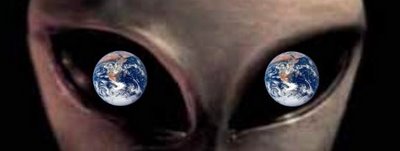
By www.telegraph.co.uk
1-25-10
The search for alien life forms should be conducted here on Earth rather than in outer space, scientists have claimed.
Prof Davies said: "We need to give up the notion that ET is sending us some sort of customised message and take a new approach."
Professor Paul Davies, a physicist at Arizona University will tell a meeting at the Royal Society that the best way of proving that extra-terrestrial life exists elsewhere in the universe is to use evidence from earth.
The meeting at the Royal Society, which will include representatives from Nasa, the European Space Agency and the UN Office for Outer space Affairs marks the 5th anniversary of the Search for Extra-Terrestrial Intelligence (SETI) programme. Lord Rees, President of the Royal Society will also lead one of the sessions.
Prof Davies said: We need to give up the notion that ET is sending us some sort of customised message and take a new approach."
He suggested that the search could focus on deserts, volcanic vents, salt-saturated lakes and the dry valleys of Antarctica - places where ordinary life struggles to survive - to find "weird" microbes that belong to a "shadow biosphere".
Felissa Wolfe-Simon, from the US Geological Survey, is currently looking at the possibility that arsenic, found in contaminated places such as the Mono Lake in California, might support forms of life in the same way as other life forms use phosphorous.
However, Professor Colin Pillinger, who led the Beagle 2 Mars landing mission remains sceptical. He said: "I prefer to deal in scientific fact - this is wildly science fiction. You'd be off your trolley to go searching for arsenic-based life."
Prof Pillinger argues that Mars is the most likely place to find alien life.
The conference will also discuss how humans might respond to the discovery of extra-terrestrial intelligence.
Albert Harrison, the from University of California, said: "It is easy to imagine scenarios resulting in widespread psychological disintegration and social chaos. but historical prototypes, reactions to false alarms and survey results suggest that the predominant response to the discover of a microwave transmission from light years away is likely to be equanimity, perhaps even delight."












.png)